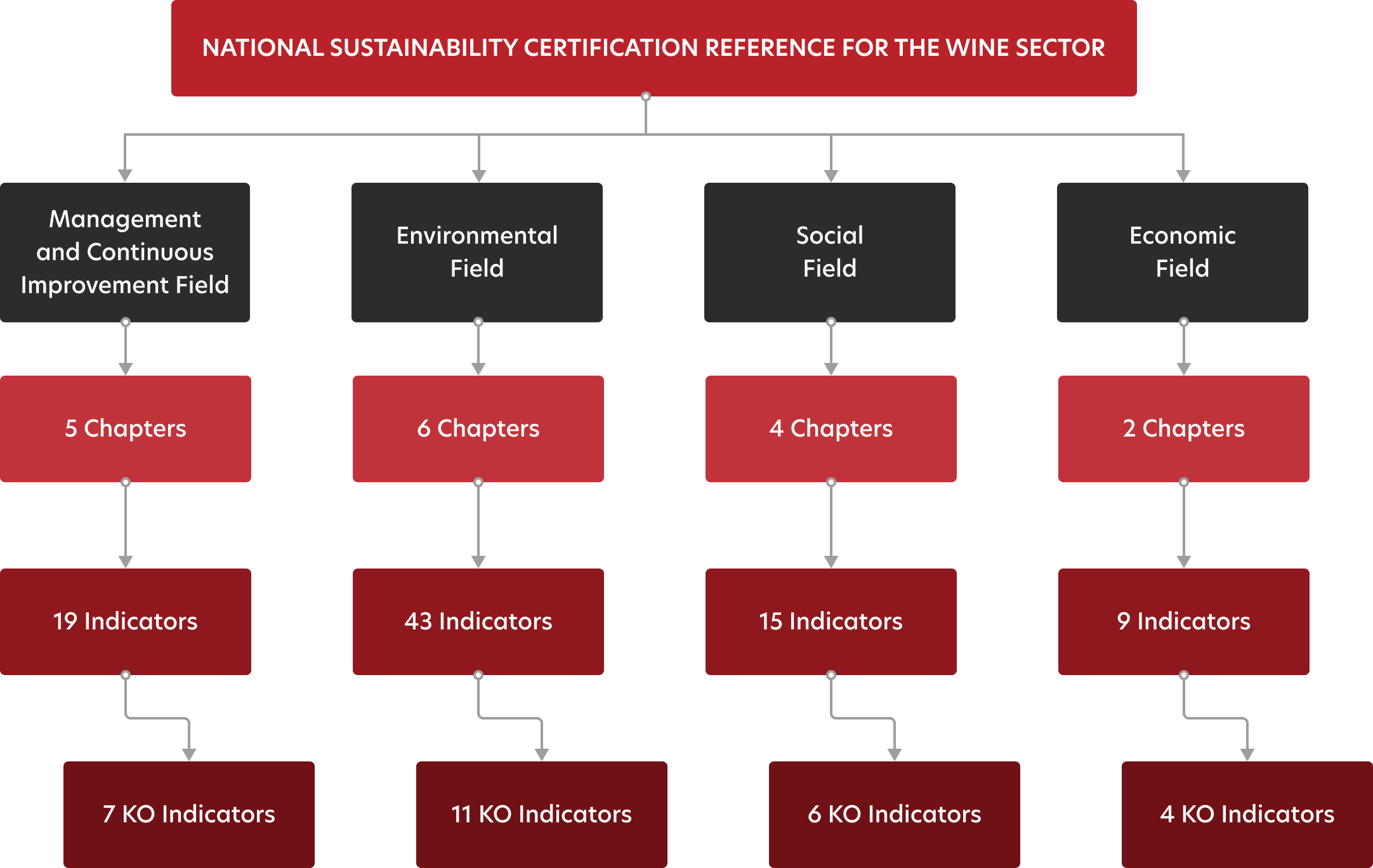Sustainability
More information about Sustainability Certification
The National Reference for Sustainability Certification in the Wine Sector is a working tool for organizations in the national wine sector. The aim is to certify the organizations, so that this certification can be evidenced in the national and international markets, including, under conditions to be established, in terms of the commercialized product.
The guidelines of the National Sustainability Certification Reference for the Wine Sector are:
Nationwide
A national benchmark, taking into account the specificities of each region where the operator carries out its activity
Inclusiveness
Inclusive, universal and equitable benchmark, foreseeing its application and accessibility to micro, small, medium and large organizations, as well as organizations with multiregional activity
Simplicity
Explicit benchmark through a simplified and transparent formulation, without prejudice to recommending the continuous improvement model
Credibility
This benchmark ensures a model of credibility in light of existing systems and international models in place
“There is little time for corrective action” was a message from the World Commission on Environment and Development: Our Common Future (1988). It also mentions that: “While scientists continue to investigate and debate causes and effects, in many cases we already know enough to justify an action. This is true locally and regionally in cases of threats such as:
desertification, deforestation, toxic waste and acidification;
and it's true globally for threats such as:
climate change, depletion of the ozone layer, and species extinction"
The objectives of the CAP reform define the importance of social, economic and environmental approaches in order to achieve a sustainable system of agricultural production, which implies that each MS, in defining the CAP Strategic Plan, has to reflect these priorities in the construction of the architecture of its programs; in reviewing these National Strategic Plans implementing the CAP, the European Commission will verify their coherence with the objectives of the European Green Deal, and will monitor progress towards their realisation.
For all these reasons, the definition of sustainability initiatives in the agricultural sector (whether sectoral, regional or national) are extremely important to guarantee the dissemination of practices and to support the differentiation of production in consumer markets. The wine sector, due to its territorial, economic, social and environmental importance, can lead this “path” and play its role in achieving the sustainability objectives. This growing importance of the issue of sustainability, particularly in the wine sector, has led the OIV to lead the discussion on the subject and to share definitions, concepts and operational practices within the sector.
This Benchmark followed the Resolution OIV-VITI 641-2020 (GUIDE FOR THE IMPLEMENTATION OF THE PRINCIPLES OF SUSTAINABLE VITIVINICULTURE) which identifies the main challenges posed to the wine sector in adapting the sustainability approach:
- Maintain a sustainable market in accordance with society's expectations, both inside and outside the organization, maintaining economic and productive competitiveness
- Improve society's trust in wine companies by implementing a sustainability-based approach
- Develop a sustainable viticulture with the aim of preventing negative environmental impacts and adapting to climate change, through the adaptation of production practices
The National Reference for Sustainability Certification in the Wine Sector thus seeks to promote the sustainability of organizations in the sector, of different types of activity, of different dimensions and with different levels of evolution in the implementation of practices, in the sense that it is simple, inclusive and credible.
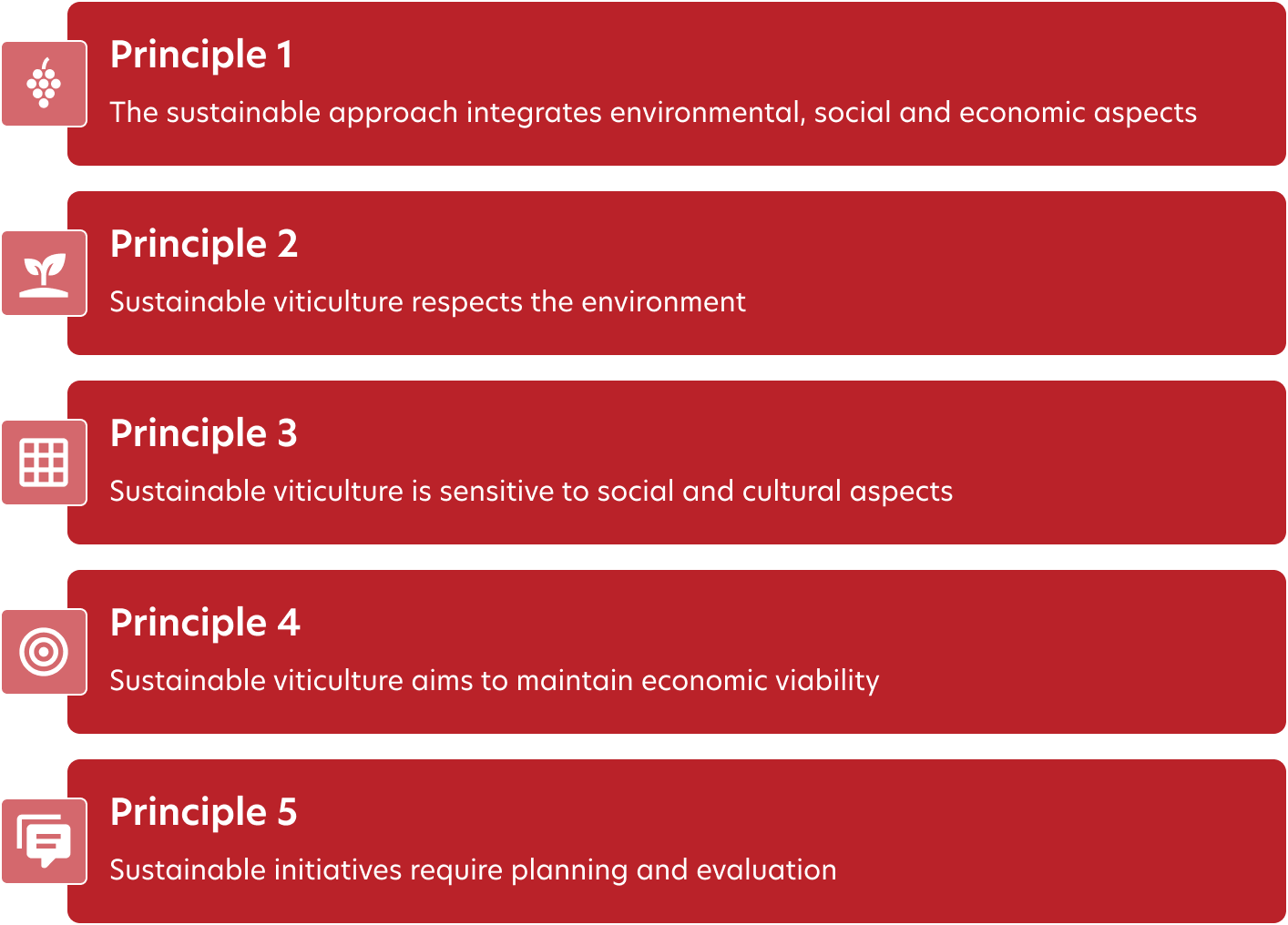
Scope, Segmentation and General Guidelines
Covered Organizations
This Benchmark applies to all organizations in the national wine sector that are responsible and oriented towards sustainability, that is, those that are focused on creating economic, cultural, social and environmental value, whose practices and results are shared with their stakeholders and taking into account environmental and social concerns.
The different categories of operators covered by this Benchmark are: Distiller, Bottler, Wine Vinegar Manufacturer, Preparer, Grapegrower, Winegrower, and Winegrower-bottler..
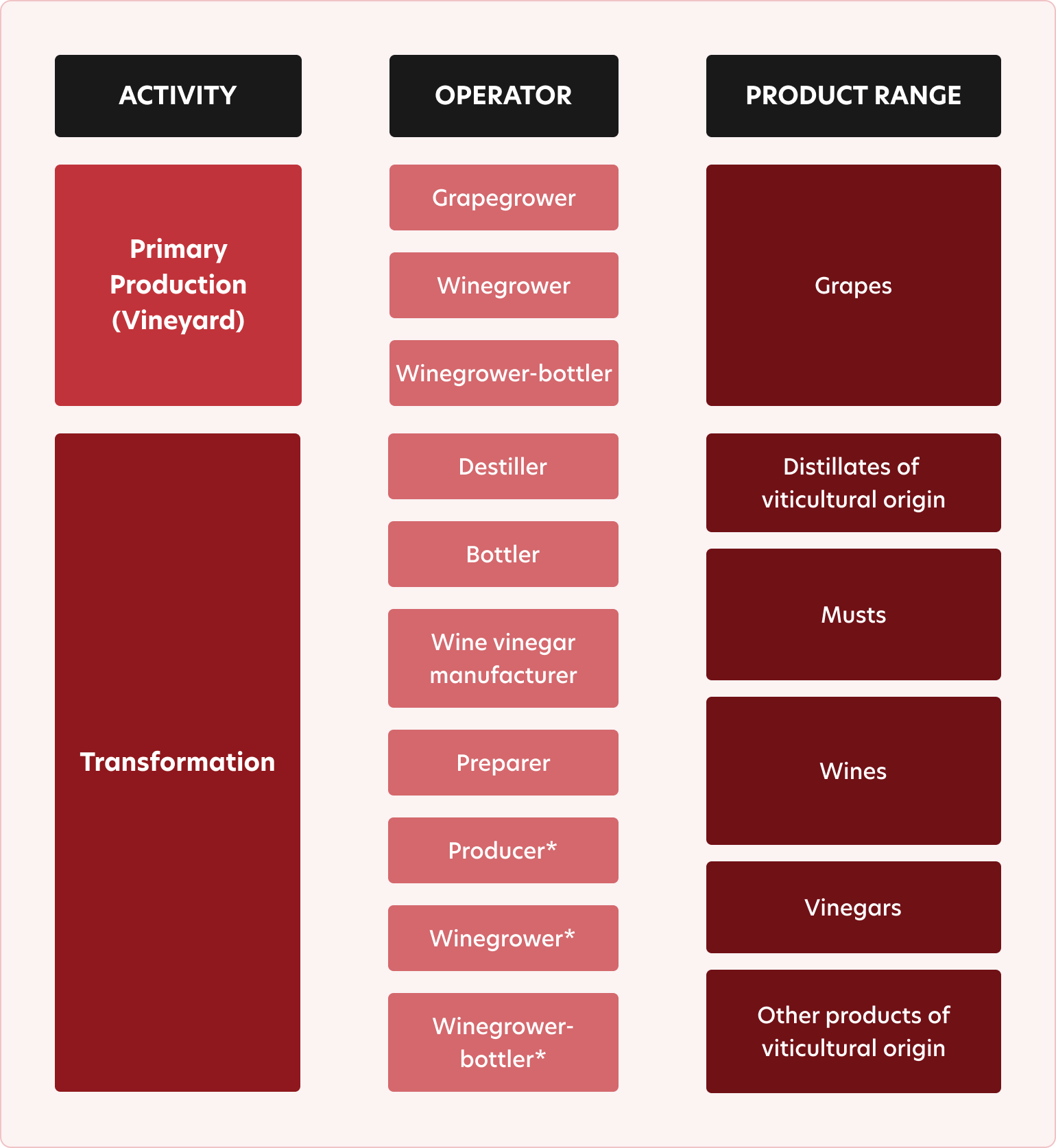
Guidelines
Organizations that intend to carry out an assessment must begin by understanding the concept of sustainability, as defined by the OIV, as well as carrying out a prior reading of the National Reference for Certification of Sustainability in the Wine Sector.
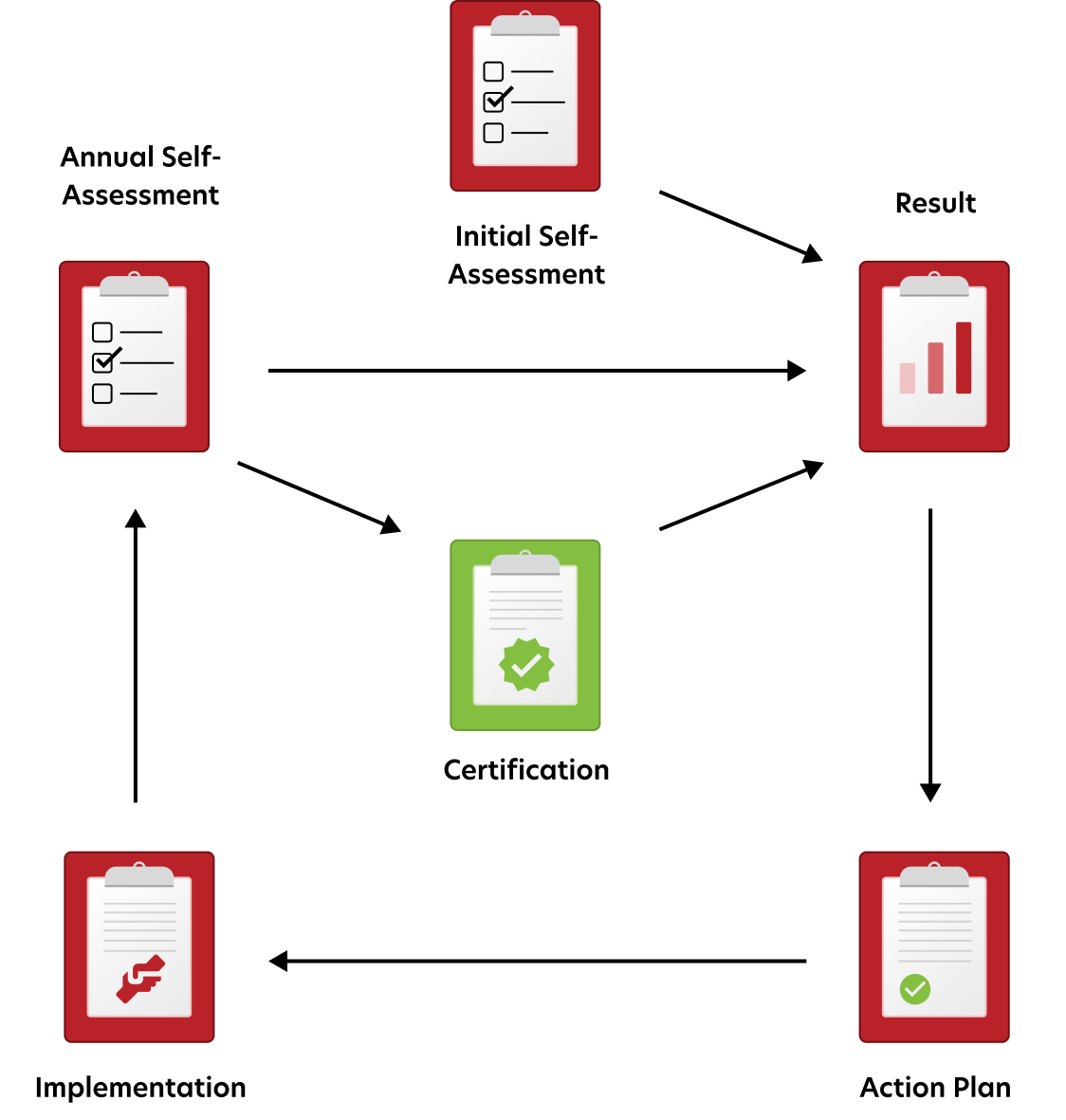
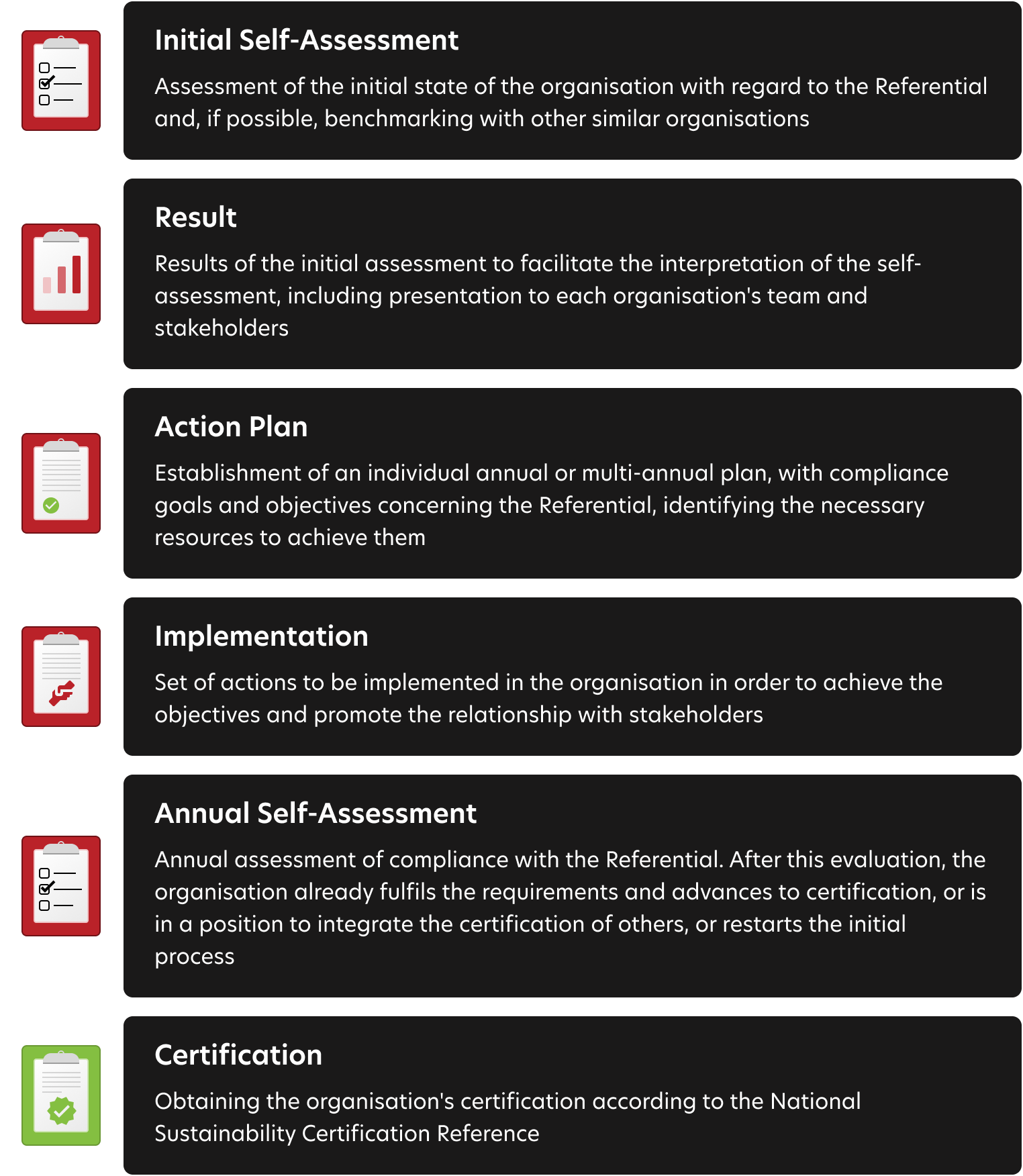
Organizations must make their assessment, under the National Benchmark for Sustainability Certification of the Wine Sector, relative to the dimension of their entire activity in the national territory and not only of each of their companies and/or farms.
Each operator, based on its (their) activity(ies), will have different numbers of indicators to meet. Therefore, although the Benchmark contains 86 indicators distributed in 17 chapters, each operator will be evaluated only on those that fit its activity.
Domains, Areas of Intervention and Indicators
Based on the comparative analysis with the different international initiatives analyzed, presented in the Diagnosis Report, and having, as base references, the OIV resolutions in the scope of sustainability for the wine sector, the Referential was built taking into account 4 central intervention vectors (domains): 1) Management and Continuous Improvement, 2) Environmental, 3) Social and 4) Economic.
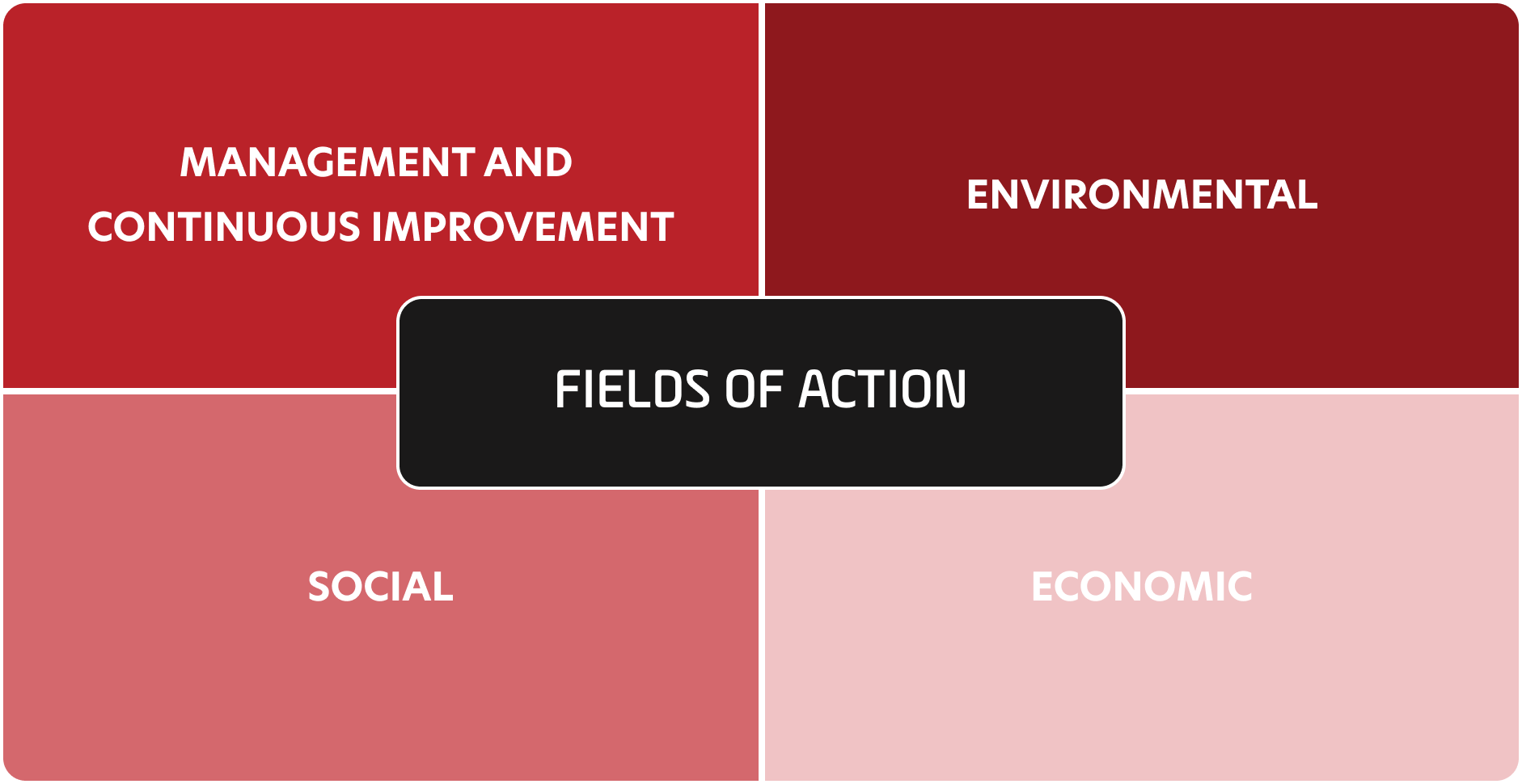
The National Reference for Sustainability Certification in the Wine Sector has a set of indicators (86), of which 28 are “KO” indicators, organized into chapters (17) and distributed across the 4 Intervention Domains.
